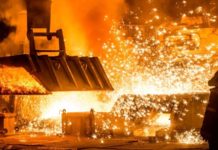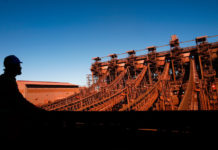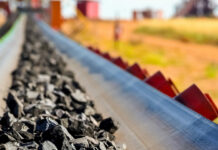
[miningmx.com] — IRON ore prices will stay high until at least 2012/2013 with the mining companies holding the upper hand over Chinese consumers until sufficient new mine capacity comes on line.
Growing Chinese investment in iron ore projects around the world is aimed at restoring a balance to the market and lowering prices.
That’s the view of investment institution MF Global which, in a recently published report, said the mining companies had learnt from mistakes they made in the 1960’s and 1970’s when supplying iron ore into Japan.
MF Global noted its forecast of an iron ore surplus from about 2012/2013 depended on whether the supply plans of various operators “become real’ as well as the steel production ambitions of India and Brazil.
The report said an important factor in the current market situation was that Japan had invested in iron ore supply from Australia and Brazil ahead of the anticipated rise in demand while China did not.
“The result was to keep iron ore prices low and manageable. Being in control, prices were set mostly on Japan’s terms with annually set benchmarks being the system for over 40 years.’
That annual benchmark system now appears dead in Asia according to MF Global which said “most but not all contracts’ were being settled quarterly based on an average of the previous quarter’s spot pricing.
MF Global said this was the result of soaring growth in Chinese steel production from 2000 which changed the dynamics of the industry.
“China did not invest in supply growth to ensure that the market would remain in balance/surplus and keep prices low.
“Having beaten every GDP (gross domestic product) target in each of the previous three, five-year plans within the space of two to three years, it has consumed a significantly higher amount of iron ore than it had envisaged.
” (That) China is now willing to invest heavily in the sector highlights an interesting turning point in their understanding of the market.
“It is essentially China’s responsibility to provide support or financing to ensure that the new entrants to the market deliver tons.
“China now has some involvement (offtake/financing/equity) in over 90% of Australia’s juniors and African producers.
“However, we believe their efforts came far too late and, as such, the iron ore market will remain very tight and prices relatively high over the next couple of years before the new supply effect takes hold.’
By contrast, MF Global believed that “the big three miners (Rio Tinto,BHP Billiton and Vale) appear to have remembered the mistakes they made during the 1960’s and 70’s of overinvestment and reliance upon customers for financing.
“Importantly, they now control their own balance sheets and can rely upon internal cash flow funding for the majority of their growth.’
The MF Global report said cash costs for the major iron ore producers sat around $30/t compared with China where marginal cash costs were above $100/t.
The Big Three miners also controlled much of the infrastructure in the main iron ore producing regions with the exception of shipping although Brazilian group Vale was now aggressively developing a shipping business.
Reason is the new quarterly pricing structure is on a CFR (cost and freight) basis which means the buyer agrees a price but the seller assumes the shipping risk.
It currently costs $8/t to ship from Australia to China but $22/t to ship from Brazil which means the Brazilian mining firms face a substantial freight risk given the volatility of shipping rates to China.
The report commented, “Vale has been aggressively increasing its shipping fleet over the past couple of years ordering over $2bn worth of ships including new “Chinamax’ ships which can carry five times the cargo load of the current “Panamax’ ships.’










